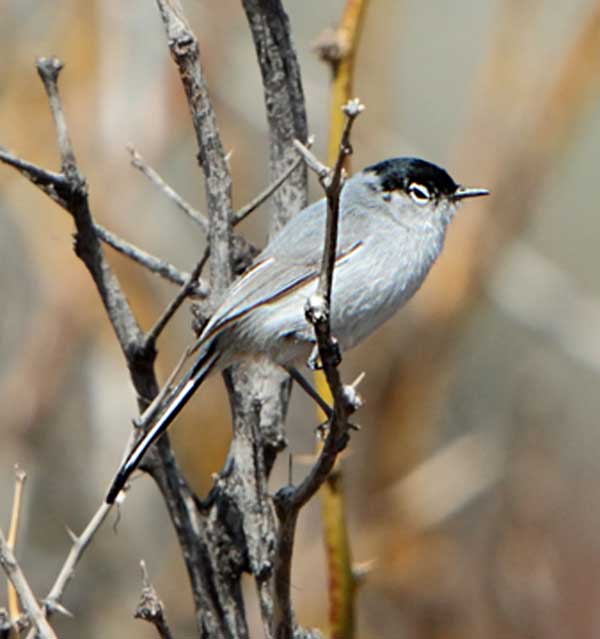
Polioptila melanura (*)
Superregnum: Eukaryota
Cladus: Unikonta
Cladus: Opisthokonta
Cladus: Holozoa
Regnum: Animalia
Subregnum: Eumetazoa
Cladus: Bilateria
Cladus: Nephrozoa
Superphylum: Deuterostomia
Phylum: Chordata
Subphylum: Vertebrata
Infraphylum: Gnathostomata
Megaclassis: Osteichthyes
Cladus: Sarcopterygii
Cladus: Rhipidistia
Cladus: Tetrapodomorpha
Cladus: Eotetrapodiformes
Cladus: Elpistostegalia
Superclassis: Tetrapoda
Cladus: Reptiliomorpha
Cladus: Amniota
Classis: Reptilia
Cladus: Eureptilia
Cladus: Romeriida
Subclassis: Diapsida
Cladus: Sauria
Infraclassis: Archosauromorpha
Cladus: Crurotarsi
Divisio: Archosauria
Cladus: Avemetatarsalia
Cladus: Ornithodira
Subtaxon: Dinosauromorpha
Cladus: Dinosauriformes
Cladus: Dracohors
Cladus: Dinosauria
Ordo: Saurischia
Cladus: Eusaurischia
Subordo: Theropoda
Cladus: Neotheropoda
Cladus: Averostra
Cladus: Tetanurae
Cladus: Avetheropoda
Cladus: Coelurosauria
Cladus: Tyrannoraptora
Cladus: Maniraptoromorpha
Cladus: Maniraptoriformes
Cladus: Maniraptora
Cladus: Pennaraptora
Cladus: Paraves
Cladus: Eumaniraptora
Cladus: Avialae
Infraclassis: Aves
Cladus: Euavialae
Cladus: Avebrevicauda
Cladus: Pygostylia
Cladus: Ornithothoraces
Cladus: Ornithuromorpha
Cladus: Carinatae
Parvclassis: Neornithes
Cohors: Neognathae
Cladus: Neoaves
Cladus: Telluraves
Cladus: Australaves
Ordo: Passeriformes
Subordo: Passeri
Infraordo: Passerida
Superfamilia: Certhioidea
Familia: Polioptilidae
Genus: Polioptila
Species: Polioptila melanura
Subspecies: P. m. curtata – P. m. lucida – P. m. melanura
Name
Polioptila melanura Lawrence, 1857
Type locality: Texas, USA (=Rio Grande Valley)
References
Lawrence, G.N. 1857. Descriptions of New Species of Birds of the Genera Chordeiles, Swainson, and Polioptila, Sclater. Annals of the Lyceum of Natural History of New York 6: 165–168 BHL Reference page. Original descritpion p. 168 BHL
Vernacular names
English: Black-tailed Gnatcatcher
español: Perlita colinegra
The black-tailed gnatcatcher (Polioptila melanura) is a small, insectivorous bird which ranges throughout the Sonoran and Chihuahuan Deserts of the southwestern United States and northern Mexico. It is nonmigratory and found in arid desert areas year-round.
Taxonomy
The black-tailed gnatcatcher was described by American ornithologist George Newbold Lawrence in 1857. Meaning 'black-tailed', its specific name is derived from the Ancient Greek melano- 'black' and oura 'tail'.[2]
Description
The black-tailed gnatcatcher reaches about 4.5 to 5 inches in length, much of it taken up by a long black tail lined with white outer feathers. The body is blue-grey, with white underparts, and while it is similar to the blue-grey gnatcatcher, the two birds are differentiated by the amount of black in the tail feathers. The male has a black cap during the summer that extends to the eyes. Females and winter males, lacking the black cap, are difficult to distinguish from the blue-grey gnatcatcher. The best way to tell the two apart is the tail; that of the blue-grey is mostly white when viewed from below, and the black-tailed is predominantly black underneath. Like other gnatcatchers, it may give harsh, scolding calls while foraging for small insects and spiders in desert shrubs.[3]
Behaviour
Black-tailed gnatcatchers live in pairs all year, defending their territory and foraging in trees and low shrubs for a wide variety of small insects and some spiders. Unlike the blue-grey gnatcatcher, the black-tailed variety rarely catches insects in midair.
Breeding
The nest is an open-cup, built by both sexes, and is typically found in low shrubs less than five feet off the ground. If available at the nesting site, desert mistletoe, Phoradendron californicum, is often used as the substrate for the nest, which provides nice concealment. It is constructed of a variety of materials including weeds, grass, strips of bark, spider webs and plant fibers. It is lined with finer, softer matter. Three to five bluish-white eggs with red-brown dots are incubated by both parents and take 14 days to hatch. The young are fed by both parents, and leave the nest 10 to 15 days after hatching. Even though cowbirds often lay eggs in this species' nests, and the pair end up raising cowbird young, the black-tailed gnatcatcher population seems to be holding up well.[3]
References
BirdLife International (2018). "Polioptila melanura". IUCN Red List of Threatened Species. 2018: e.T22711588A132099574. doi:10.2305/IUCN.UK.2018-2.RLTS.T22711588A132099574.en. Retrieved 13 November 2021.
Liddell, Henry George & Robert Scott (1980). A Greek-English Lexicon (Abridged ed.). United Kingdom: Oxford University Press. ISBN 0-19-910207-4.
Steven J. Phillips; Patricia Wentworth Comus, eds. (2000). A Natural History of the Sonoran Desert. University of California Press. pp. 464–466. ISBN 0-520-21980-5.
"Polioptila melanura". Integrated Taxonomic Information System. Retrieved 24 January 2006.
Retrieved from "http://en.wikipedia.org/"
All text is available under the terms of the GNU Free Documentation License

